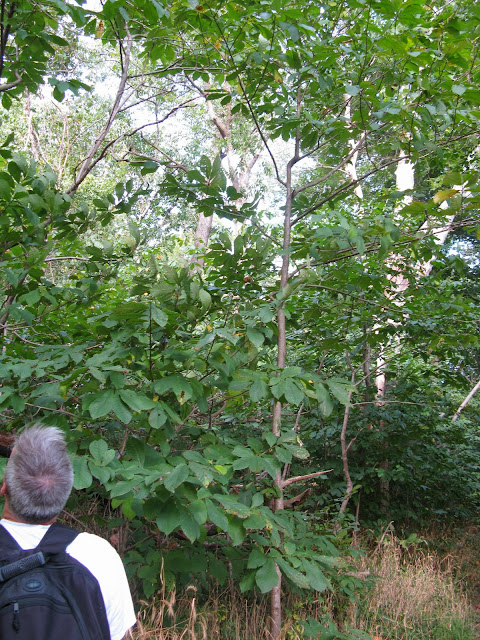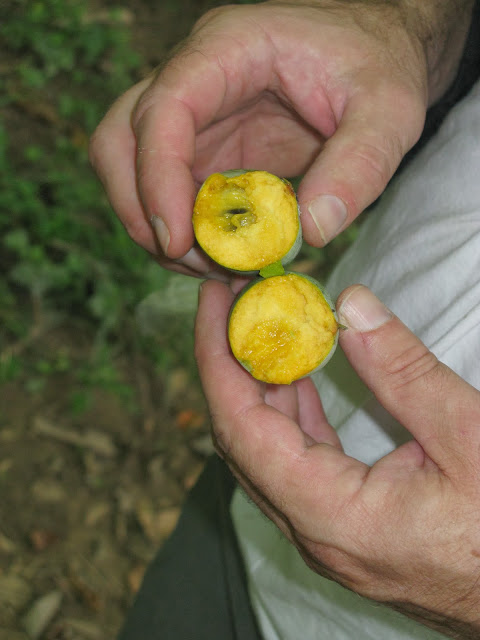We peeled off the skins and separated the seeds from the flesh. The seeds were about the size of a penny.
Peeling them was tricky. The fruit was small and the flesh slippery, making them hard to hold. And honestly, the ratio of flesh to seed was small, making it hard to get a decent amount of fruit. However, we persevered slicing up all of the "ripe" ones and collected what we could for smoothie making.
At one point while cutting up the paw paws, I licked my fingers and tasted the intense tropical mango flavor. Immediately following the sweetness was a very bitter after-taste. It surprised me. I had visions of collecting paw paws year after year, enjoying all kinds of sweet goodies made from them. Puzzled, I Googled it, and sure enough, others had experienced the bitter taste also. Still, this was not going to deter my enjoyment of our paw paws, a bounty from nature itself! To remedy the bitter taste, we added banana and organic frozen raspberry to the smoothie. There.

I took one sip. No! It couldn't be. It tasted of nothing but bitterness! Sadly, I could not drink my smoothie-- it was just too bitter. After dreaming of paw paws for two years, my hopes were dashed. I felt disappointed the whole night!
Greg on the other hand, choked down his smoothie. And for my husband, who normally has a stomach made of steel, his story ended badly: he was sick for the rest of the night. Very sick.
We have since learned that the paw paws were likely not ripe enough and could have been edible had we waited a few days. I'm also a believer in trying small amounts of nature for the first time (I've learned the hard way).
Needless to say, after the build up and disappointment, I'm not sure I have the heart to try them again. As for Greg, he says he is willing to try them again...really!?
Happy Trails,
--Two Peas


















